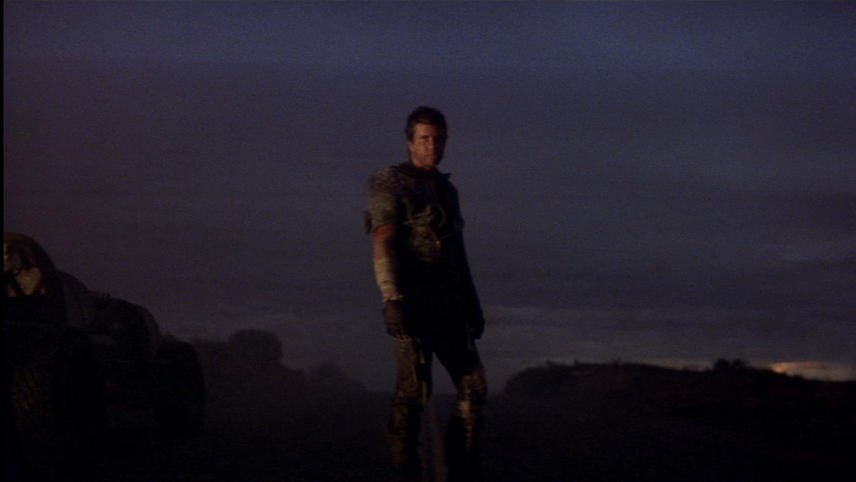Dish of the Day
Just some film musings of a more succinct, spontaneous and sometimes seditious nature:
Monday, December 9, 2024
Today’s “Dish of the Day” has a review of mine that was inspired by a post in one of the Facebook film related chat rooms. This includes the Cinema Cafe group (all readers are encouraged to join here: https://www.facebook.com/groups/902349343110685).
Mad Max 2: The Road Warrior (1981)
Like 1974’s The Godfather Part II, Mad Max 2 aka The Road Warrior (1981) is a bombshell of a sequel. Both epics embrace an expansion of themes, conflict and character complexities. These are the rarest of all follow-ups that reverberate far beyond the parameters set by their predecessors… or many “original” cinematic stories for that matter.
The filmmakers’ focus in Mad Max 2 is on an understandably indifferent loner (he lost his family in the first Mad Max film), well played by an understated Mel Gibson, who becomes the unlikeliest of heroes. He’s similar to Robert Ryan’s self-centred rancher Blaise Starrett in director Andre de Toth’s superb 1959 western Day of the Outlaw in the way he undergoes an unanticipated deep-rooted transformation of conscience. This is not an easy narrative development to pull-off since the effort that goes into establishing the main character’s self-absorption must then be credibly overturned by that same person’s act of altruism. Australian director George Miller, working from a script by himself, Terry Hayes, and Brian Hannant, presents Max’s transition as entirely believable. He achieves this by providing such extremely divisive circumstances between, as well as an array of tenacious convictions to, his characters on both sides of the conflict (even the worst of the evil doers), thus providing Max with an unequivocal, but subtly presented, shot at redemption.
After fulfilling his end of a deal (i.e. to deliver a rig big enough to haul its people’s precious petrol), Max’s determination to leave the compound with all of the gasoline he can carry, despite a chorus of pleas to stay, remains resolute. And in showing him abandon a courageous and caring community to fend for themselves against a savage, relentless adversary intent on their destruction, is where the storytellers gain strength and integrity. Max maintains his egotistical resolve whereas lesser filmmakers would have identified their white knight sans shading, i.e. without a moment’s consideration for himself. After going on his way, the Road Warrior, with his personal bounty of fuel in tow, is almost immediately attacked and left for dead by his assailants… those being the same vicious marauders the compound’s residents are trying to evade. In a breathtaking, almost surreal panoramic scene shot from above, a barely conscious Max is subsequently returned to the stronghold by the Gyro Captain (a deliciously animated Bruce Spence). Max is now only a shell of his former physical self, possessing what the group’s leader now considers to be Max’s worthless change of attitude. It is only when this now broken-down, burnt out subject practically insists on driving the tanker, that the idea sounds as if it might be of some benefit to the others.
Mad Max 2’s humanism causes the film to rise above the action genre (expertly staged, photographed, scored and edited as those exploits are) with lasting implications for us all. Miller and Co courageously go against the ‘80s grain of popular appeal (witnessed mostly in U.S. cinema during this time period) by demonstrating the unsoftened brutality of acts, as well as their severe consequences, carried out by such a formidable foe. There’s resonance in the film’s post-apocalyptic opening, an eloquent and thought provoking narration (especially when we find out just who it is that’s narrating), an existential unpredictability as to whom among those we’ve come to know so well might suddenly meet their demise and, most importantly, this mythological warrior of the asphalt. He’s become one humble but noble individual who discovers a reserve of humanity thought lost, a personal trait often found only in the most transcendental western or samurai setting. At the conclusion, there’s one image >>>(Spoilers)<<< of sand pouring onto the ground reminiscent of, but also a sly variation on, 1948’s The Treasure of the Sierra Madre, and another, the last and most indelible: Max standing all alone next to that shill of a tanker, which brings to mind Ethan Edwards’ final solitary stance in John Ford’s 1956 western The Searchers. These are the moments designed to, paraphrasing our narrator, “… forever live in one’s memory.”
A.G.


